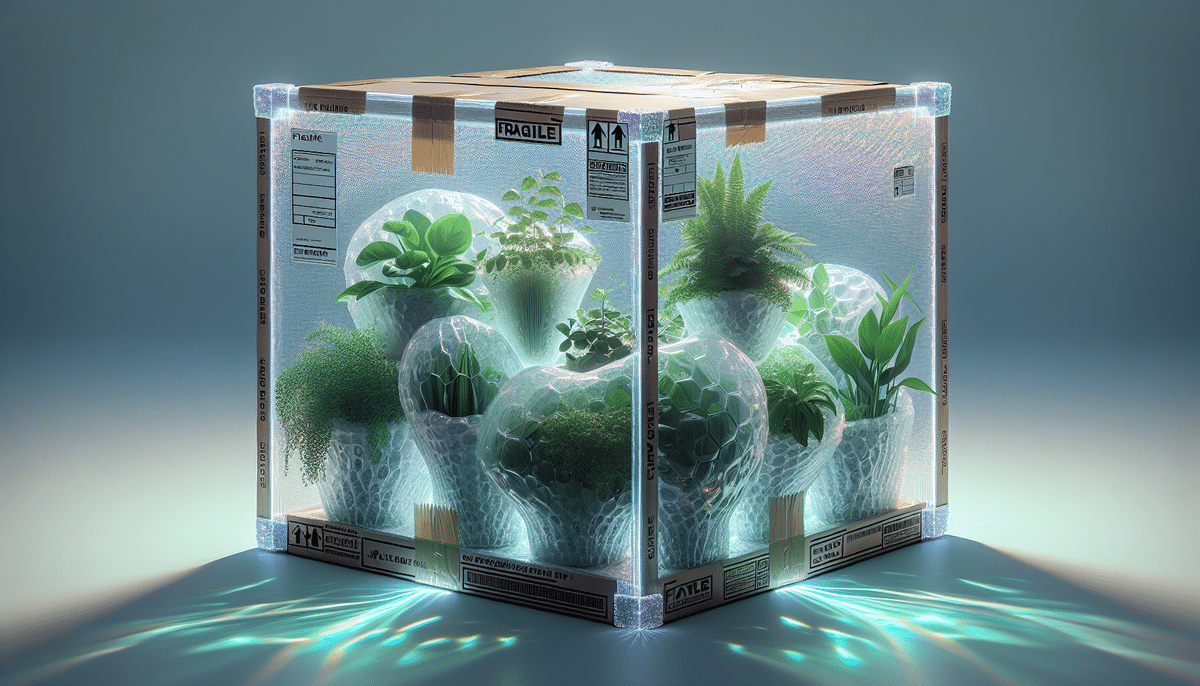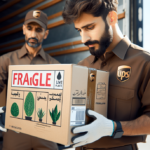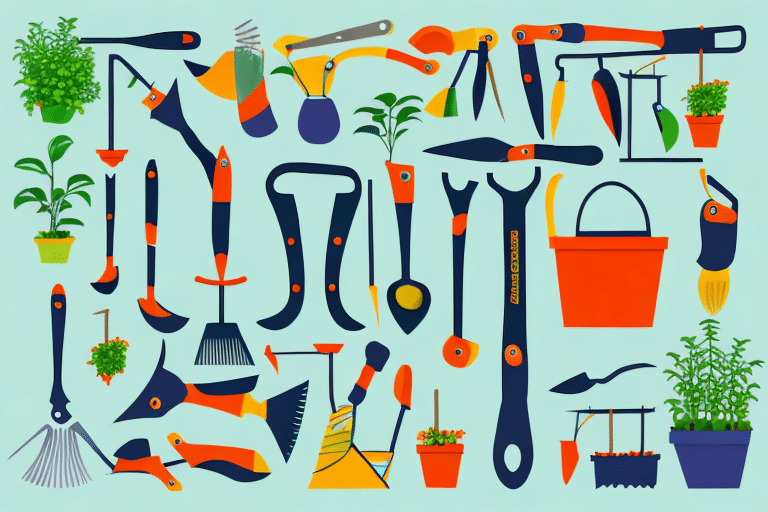How to Safely Ship Plants: A Step-by-Step Guide
If you're an avid gardener or plant enthusiast, you understand the importance of keeping your beloved plants healthy and thriving. However, there may come a time when you need to ship your plants—whether to a friend, family member, or customer. Shipping plants can be a challenging process, but with the right knowledge and materials, you can ensure that your plants arrive at their destination safe and sound. In this comprehensive guide, we will explore everything you need to know about how to safely ship plants, step by step.
Why Proper Plant Packaging is Essential for Safe Shipping
Before diving into the specifics of how to ship plants, it's crucial to understand why proper packaging is vital for safe shipping. Plants are delicate and can easily become damaged or stressed during transportation. Without the appropriate packaging, plants may suffer from dehydration, leaf damage, or even death. Proper packaging ensures that your plants remain secure and healthy throughout the shipping process.
One of the primary reasons proper plant packaging is important is to protect plants from extreme temperatures. During transportation, plants may be exposed to harsh conditions that can damage leaves, stems, and roots. Using insulated boxes or heat packs helps maintain a consistent temperature, safeguarding your plants from heat or cold stress. According to the American Phytopathological Society, maintaining optimal temperature ranges is crucial for preventing plant stress and disease.
Another critical factor is preventing the spread of pests and diseases. Improperly packaged plants can become infested with insects or infected with pathogens during transit. This not only harms the shipped plants but also poses a risk to other plants in the vicinity. Utilizing appropriate packaging materials and adhering to sanitation procedures can help mitigate these risks, ensuring that your plants arrive healthy and pest-free.
Choosing the Right Shipping Container for Your Plants
The first step to safely shipping plants is selecting the appropriate container. The type of container you choose depends on the size and type of plant you are shipping. For smaller plants, a sturdy cardboard box with ventilation holes may suffice. Larger plants may require specialized plant shipping boxes with added reinforcements and handles to ensure they can withstand the rigors of transportation.
It's essential that the shipping container is durable enough to endure potential drops, bumps, or jostling during transit. Boxes made from corrugated cardboard are generally recommended for their strength and ability to provide adequate protection.
Additionally, consider the climate and weather conditions during transportation. If shipping during extreme temperatures, insulated containers or thermal liners can help protect your plants from heat or cold. For international shipments, be aware of specific regulations and requirements for shipping live plants to avoid any legal complications.
Proper labeling of your shipping container is also crucial. Include the recipient's name and address, along with any special handling instructions such as "This Side Up" or "Fragile." Clear labeling ensures that the carrier handles your package appropriately, reducing the risk of damage.
How to Prepare Your Plants for Shipping
Preparing your plants for shipping involves several important steps to ensure they remain healthy during transit:
- Watering: Thoroughly water your plants a few days before shipping. This ensures they are well-hydrated without being waterlogged, which can lead to root rot.
- Pruning: Trim any dead or damaged leaves and stems. Removing excess foliage reduces the risk of damage and minimizes the plant's stress during shipping.
- Cleaning: Remove excess soil and debris from the pot. This prevents soil spillage during transit, which can attract pests and create a mess.
- Drying: Allow the plants to dry completely after pruning. This helps prevent fungal infections and other moisture-related issues during shipping.
Choosing the right packaging materials is also essential. Use sturdy boxes that provide ample space for your plants without causing them to be crushed. Incorporate packing materials such as bubble wrap, packing paper, or packing peanuts to cushion the plants and prevent movement within the container.
Finally, include clear and accurate labels on your packages. Add both your contact information and the recipient's details. Including handling instructions ensures that carriers treat your shipment with the necessary care.
Packing Materials You Will Need to Ship Your Plants Safely
Gathering the right packing materials is crucial for the safe transportation of your plants. Here’s what you’ll need:
- Packing Paper or Bubble Wrap: To cushion and protect the plant's leaves, stems, and pot.
- Packing Peanuts or Shredded Paper: To fill empty spaces in the container and prevent movement during transit.
- Sturdy Boxes: Choose boxes that are sturdy enough to protect your plants from impacts.
- Insulated Materials: For temperature-sensitive plants, consider using insulated boxes or thermal liners.
- Tape: High-quality packaging tape to secure the container.
- Labels: Clearly mark the package with "Fragile" and "Live Plants" to ensure careful handling.
It's important to note that not all plants are suitable for shipping. Some plants are more delicate and may not survive the shipping process. Research the specific needs of your plant and consult with a horticulturist or professional if necessary. Additionally, verify the shipping regulations of your destination to ensure that your plant can be legally shipped there.
Step-by-Step Instructions for Packing Your Plants for Shipping
Packing your plants meticulously is essential to ensure they arrive safely. Follow these step-by-step instructions:
- Prepare the Container: Line the bottom of the box with packing peanuts or shredded paper to create a cushioned base.
- Wrap the Plant: Carefully wrap each plant individually in packing paper or bubble wrap, covering all leaves and stems to protect them from damage.
- Arrange the Plants: If shipping multiple plants, place them in the container so they fit snugly without touching each other, minimizing the risk of abrasion.
- Fill Empty Spaces: Use packing peanuts or shredded paper to fill any remaining spaces in the box, ensuring the plants remain stationary during transit.
- Seal the Container: Secure the box with high-quality tape, reinforcing all edges and corners to provide additional protection.
- Label Appropriately: Clearly label the box with "Fragile" and "Live Plants" to ensure careful handling by the shipping carrier.
Not all plants are suitable for shipping. Some may be too delicate or sensitive to endure the journey. Research and ensure that your plants can withstand the shipping conditions before proceeding.
Including care instructions for the recipient is also a thoughtful addition. Provide information on watering schedules, light requirements, and any other specific care needs to help the recipient acclimate the plants to their new environment successfully.
Sealing and Labeling Your Shipment: A Crucial Step for Safe Plant Transportation
Properly sealing and labeling your shipment is a vital step in ensuring the safe transportation of your plants. In addition to labeling the container as "Fragile" and "Live Plants," include both your contact information and the recipient's details. This information is essential in case of any delivery issues or delays.
Purchasing shipping insurance is highly recommended. Insurance protects your plants in case of damage or loss during transit, providing peace of mind and financial protection. Most shipping carriers offer insurance options that you can add at the time of shipment.
Ensure that the plants are securely packaged and that all packing materials are in place to prevent shifting or damage. Double-check that the plants are neither overwatered nor underwatered before shipping, as improper hydration can cause significant stress and damage during transit.
By taking these precautions, you can significantly reduce the risk of your plants arriving damaged and ensure they reach their destination in excellent condition.
Tips and Tricks for Minimizing Stress on Your Plants During Shipping
Shipping can be a stressful experience for plants. Implementing the following tips can help minimize this stress and improve the chances of your plants arriving healthy:
- Choose the Right Shipping Time: Ship your plants early in the week to avoid weekend delays. This reduces the time your plants spend in transit and decreases the likelihood of them being left in transit facilities overnight.
- Use Direct Shipping: Ship your plants directly from a post office or shipping center rather than using package drop boxes. Direct shipping ensures more controlled handling and reduces exposure to extreme temperatures.
- Proper Hydration: Water your plants thoroughly a few days before shipping. Well-hydrated plants are better equipped to handle the stress of shipping.
- Secure Pots: Wrap the pots in plastic to prevent soil spillage, which can attract pests and create a mess during transit.
- Temperature Control: For sensitive plants, consider using thermal liners or insulated boxes to maintain a stable temperature during transit.
- Avoid Extreme Conditions: Avoid shipping plants during periods of extreme weather, such as the peak of summer or winter, to protect them from temperature-related stress.
By following these tips, you can help ensure that your plants remain as stress-free as possible during their journey, increasing the likelihood of their successful arrival and establishment in their new location.
Common Mistakes to Avoid When Shipping Plants
Even with the best intentions, it's easy to make mistakes when shipping plants. Here are some common pitfalls to avoid:
- Insufficient Cushioning: Failing to provide enough padding can lead to plant damage during transportation. Always use adequate packing materials to secure your plants.
- Shipping During Extreme Temperatures: Shipping plants during very hot or cold periods can expose them to harmful conditions. Plan your shipments to avoid such extremes.
- Overwatering or Underwatering: Incorrect hydration levels can stress the plants, making them more susceptible to damage. Water your plants appropriately before shipping.
- Poor Labeling: Inadequate labeling can result in mishandling of your shipment. Ensure all labels are clear, accurate, and prominently displayed.
- Ignoring Shipping Regulations: Different regions may have specific regulations regarding plant shipments. Ignoring these can lead to legal issues and rejected shipments.
By being aware of these common mistakes, you can take proactive steps to avoid them, ensuring a smoother and more successful plant shipping experience.
How to Track Your Shipment and Ensure Safe Delivery
Once your plants are shipped, tracking the shipment is essential for ensuring safe delivery. Most shipping companies offer tracking services that allow you to monitor the progress of your shipment in real-time. Utilize these services to stay informed about the status of your plants and anticipate their arrival.
Maintaining communication with the recipient is also important. Provide them with the tracking number and expected delivery date so they can prepare to receive and care for the plants immediately upon arrival.
Additionally, consider setting up delivery notifications to receive alerts about the shipment's status. This proactive approach enables you to address any potential issues promptly, ensuring that your plants are cared for throughout the shipping process.
What to Do if Your Plants Arrive Damaged: A Guide to Handling Plant Shipping Mishaps
Despite taking all necessary precautions, sometimes plants may arrive damaged. If this happens, acting quickly can help salvage your plants:
- Document the Damage: Take clear photos of the damaged plants and their packaging as evidence for any insurance claims or disputes with the shipping carrier.
- Contact the Shipping Company: Notify the carrier immediately and file a claim for the damaged shipment. Provide them with the necessary documentation, including photos and tracking information.
- Assess Plant Health: Determine the extent of the damage. Trim any broken or damaged parts of the plant to prevent the spread of disease and promote healthy growth.
- Re-pot if Necessary: If the roots or pot were damaged, re-pot the plant in fresh soil to encourage recovery.
- Provide Extra Care: Ensure that the plant receives proper hydration, light, and nutrients to support its recovery after the shipping ordeal.
By following these steps, you can mitigate the impact of shipping mishaps and help your plants recover and thrive despite the challenges faced during transit.
Benefits of Using a Professional Plant Shipping Service
While packing and shipping plants independently is possible, utilizing a professional plant shipping service offers several advantages:
- Expertise: Professional services have extensive experience handling delicate plants, ensuring they are packed and shipped correctly to minimize stress and damage.
- Specialized Packaging: These services use specialized packaging materials and techniques designed specifically for plant transportation, offering superior protection compared to standard packaging.
- Efficient Logistics: Professional shippers are adept at navigating shipping logistics, including choosing optimal shipping times and routes to reduce transit time and exposure to extreme conditions.
- Insurance: Many professional services include insurance options, providing financial protection in case of damage or loss during transit.
- Compliance: They are well-versed in international and local shipping regulations for live plants, ensuring that your shipment complies with all necessary laws and guidelines.
For individuals or businesses that frequently ship plants or require a high level of care during shipping, partnering with a professional plant shipping service can enhance the safety and reliability of your shipments.
How to Ship Different Types of Plants: Succulents, Trees, Flowers, and More
Different types of plants have unique shipping requirements. Understanding these can help you tailor your shipping methods to the specific needs of each plant:
- Succulents: These plants require additional cushioning to prevent breakage. Use extra padding around the leaves and stems to protect them from bruising.
- Trees: Shipping trees involves using specialized shipping boxes with structural reinforcements. It's important to secure the trunk and branches to prevent bending or snapping during transit.
- Flowers: Flowers are highly sensitive to temperature and dehydration. Ship them in refrigerated boxes or include ice packs to maintain freshness, especially for long-distance shipments.
- Herbs and Small Plants: These can often be shipped in smaller boxes with adequate ventilation and moisture control to keep them healthy.
- Orchids: Orchids require a balance of humidity and airflow. Use breathable packaging materials and consider adding misting instructions for the recipient.
Always research the specific needs of your plants before shipping. Consulting with a horticulturist or professional plant shippers can provide additional insights and ensure the best possible outcome for your plant shipments.
By following these guidelines and using the appropriate packing materials, you can safely and successfully ship your plants. Take your time and be diligent during the packing process, and don't hesitate to reach out to professionals if you need additional assistance. Happy shipping!









